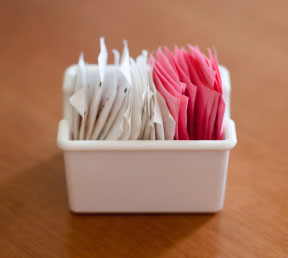Preservatives, artificial colors, hydrogenated oils, artificial sweeteners…when did our food become chock full of stuff OTHER than nutrients to nourish and feed our bodies?
For a long time I’ve followed the old “if you can’t pronounce it, don’t eat it” rule pertaining to the ingredient list. I also eliminate foods if they have an ingredient 12 syllables long. No way can that be natural. If the ingredient list takes up 1/3 of the side panel, it has too much crap in it and most likely doesn’t resemble real food.
The easiest way to avoid the crud in our markets is to shop the perimeter where the fresh stuff typically is- easier said than done. Sometimes I want crackers and dehydrated pasta with pasta sauce. And occasionally, I WANT DONUTS *gasp*.

In the previous post Is our food toxic? The importance of eating organic, I outlined one way to improve the quality of what goes in our bodies while reducing our exposure to harmful chemicals.
Now, I’m going to briefly outline some of the other junk in our food that I think should be avoided.
Don’t expect a full list of every bad ingredient in our food supply.
Here are a few basics:
Preservatives: used obviously to preserve food, making it edible for a longer period of time. It’s a luxury to have the time and resources (or a nuisance depending who you might ask) to pick fresh produce everyday or bake fresh bread to make your meals.
Some common preservatives are:
Sodium Nitrate, which when ingested by humans, can convert to nitrous acid. In animals, nitrous acid increases the rate of cancer.
Nitrates / Nitrites are used in meat products and are known to cause reactions like headaches, vomiting, asthma, and nausea in some people.
Bromates are commonly used in white flour products and can cause diarrhea.
Brominated Oils are used to preserve juices and are linked to a slew of side effects including heart, liver, kidney and thyroid issues. 3 countries have banned the use of these oils in certain food products.
Sulfites are used to preserve a wide array of foods including wine and can cause joint pain, heart palpitations, allergies and cancers.
Propylene Glycol used in ice cream and is also in antifreeze and paint remover. Yum.
Carboxymethlcellulose used in dressings and such and in 1 study gave 80% of rats injected with it tumors.
Naturally occurring ascorbic acid is a safe preservative.
I’ll stop there but the list goes on.
What about Certified Food Colors and Synthetic Food Dyes?
Pass on them. A large portion of synthetic dyes are derived from petroleum. The Center for Public Interest in Science is asking the FDA to ban all artificial food dyes which cause side effects like hyperactivity, headaches, allergic reactions and many are suspected carcinogens.
Red 40, Yellow 5, Yellow 6, and red 3 are some examples.
Natural food colors are the better alternative. However, some allergic reactions are still reported.
Why on earth do foods have to be colored anyway? If the natural color of a food turns off your appetite, don’t eat it. And kids surely don’t need sugary treats to be more enticing than they already are, do they?

Artificial Sweeteners: The fact that they’re artificial should be warning enough that these sweeteners are likely not healthy. It’s reported that artificial sweeteners can cause an enlarged liver and kidneys, skin rashes, diarrhea, headaches, hallucinations, and seizures.
Hydrogenated Oils:
These oils were introduced in the past as a “healthy” alternative to animal and vegetable fats. The essential fatty acids in both animal and vegetable oils are chemically changed by means of hydrogen and high pressure. Margarine and vegetable shortening are examples of hydrogenated oils. In the 90’s it was discovered that the unaltered form of animal and vegetable fats are (not surprisingly) healthier to consume because the hydrogenated version reduces good cholesterol and increases bad cholesterol. These hydrogenated fats may also accumulate internally because our bodies can’t process them efficiently. There’s speculation that these hydrogenated oils can cause health problems affecting nearly every part of our bodies.
The common denominator in all of these harmful substances is the fact that they’re artificial. If it was not alive at one point or has been horrendously tampered with you should probably not consume it. None of this information is new or ground breaking but I think it’s important to keep it in mind when we’re making our food choices. With little effort in the grocery store you can usually find alternatives to the long ingredient list products. Many stores now have sections full of these products.
I recently was browsing the produce section at the store and picked up a jar of sliced peaches with a huge “no added sugar” on the label. I thought to myself “Great, just peaches and peach juice”. I turned it over and found both sucralose and saccharine in the ingredient list. The point is you wont know unless you read the labels. The preservatives and additives listed on this page are also a huge reason why we prefer to make a lot of our foods from scratch. When I make homemade ice cream or frozen yogurt for example, I don’t have to add anything more than I want to. I get satisfaction from that.
 Timberline Homestead A self sufficient homesteading life
Timberline Homestead A self sufficient homesteading life
Great info to pay attention to. Fresh food does a body good